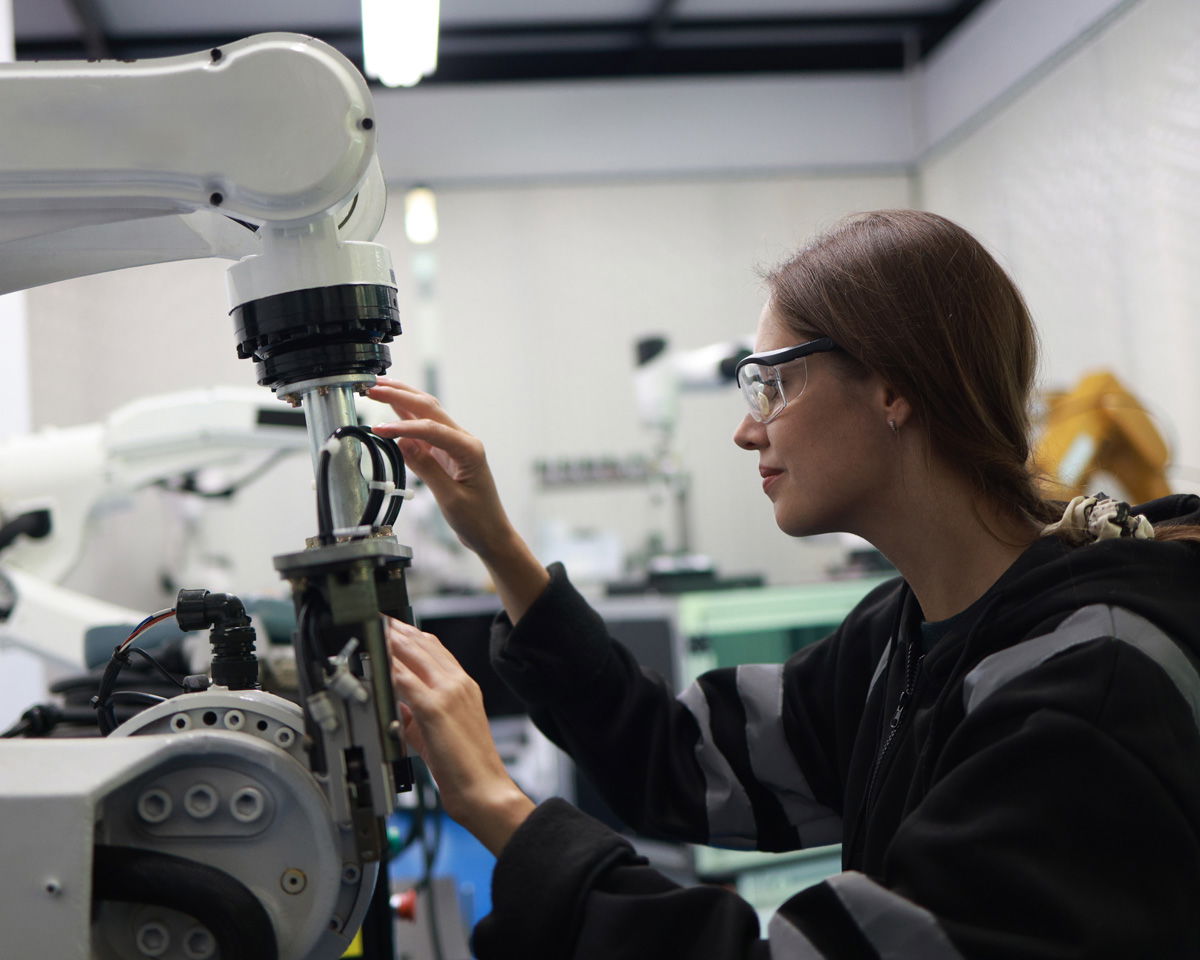
How to Become a Mechatronics Engineer
Wondering how to become a mechatronics engineer? Here, we explore the career and discuss the steps you should follow to break into mechatronics.

Mechatronics. While the word may sound like it was taken out of a science fiction novel, in reality, it carries a lot of real-world impact. One part buzzword, one part career path, mechatronics influences many aspects of what allows modern society to function from a technological perspective.
But what exactly is mechatronics, and how can you set yourself up to be successful in this niche but rapidly growing professional discipline?
Below, we offer an exploration of the term, take a look at the job outlook for those with careers in this field, and dive into the various paths someone with an interest in mechatronics can follow to establish a successful career.
Mechatronics is a branch of engineering that brings together multiple disciplines—namely, mechanical, electrical, computer, and robotics engineering—to connect seemingly disparate stages of design and production processes into a single, streamlined system.
The field was originally conceived of in the late 1960s as a portmanteau of the words “mechanical engineering” and “electronics,” but has continued evolving and growing ever since. In addition to the fields listed above, modern mechatronics may integrate elements of artificial intelligence, cybersecurity, telecommunications, optical engineering, systems and controls, and more.
“In the simplest definition, mechatronics is a field that combines various types of engineering, all integrated into one technical field of study,” says Stephen Amato, PhD and teaching professor at Northeastern.
Mechatronics can be incorporated into a range of industries and support a variety of applications. While most prevalent in the manufacturing industry (including the production of consumer goods, industrial goods, automotives, electronics, etc.), mechatronics also plays an important role in healthcare, transportation, and many other fields. Below are some of the common applications of mechatronics that you should be aware of:
Because mechatronics is used in so many different industries and applications, the discipline lends itself to wide applicability in diverse career paths.
The fourth industrial revolution—also called industry 4.0 in Europe—is a term used to broadly describe a digital transformation across industries. It is often characterized by a blending of physical and mechanical systems with the digital and even biological worlds.
Cloud computing, artificial intelligence (AI), blockchain, robotics, advanced wireless technologies, and the Internet of Things (IoT) are all hallmarks of this revolution, which we still find ourselves in today.
The fourth industrial revolution utilizes so called cyber-physical systems involving multiple sensors and connected devices, which “talk” to each other, exchange data and make smart decisions, says Krassimir Marchev, PhD and professor of practice for Northeastern’s Bachelor of Science in Mechatronics program. “As such, [mechatronics] is both a key component and enabling factor to industry 4.0.”
While industry 4.0 threatens to disrupt many industries and, potentially, many careers, those with an understanding of the field of mechatronics may be better positioned to weather this disruption and come out ahead.
Mechatronics and advanced manufacturing are often discussed together, but there are important nuances that anyone considering working in the field should understand.
According to Marchev, advanced manufacturing is a field that uses advanced technologies to provide high-quality products. Though additional priorities will vary depending on the different industries or product specificities, they can include anything from high-speed manufacturing to high-performance, durability, and other performance metrics. Other essential components of advanced manufacturing include:
“Advanced manufacturing deals exclusively with different types of manufacturing, and mechatronics might look at the various problems at each stage of a technical product’s life cycle and create an integrated, holistic solution,” Amato explains.
One of the most common job titles held by individuals who choose to go into the field of mechatronics is that of mechatronics engineer.
Mechatronics engineers often work in the automotive, aerospace, aviation, manufacturing, or oil and energy industries, amongst others. They perform a range of tasks and duties, including:
Individuals interested in breaking into the field of mechatronics have a lot to be excited about. Because mechatronics is an emerging field and there aren’t yet many professionals with expansive knowledge of this discipline, earning a bachelor’s degree in mechatronics can lead to high salaries and stable job demand.
Here, we’ve compiled a list of some of the most common job titles held by those who have completed a bachelor’s degree in mechatronics, along with average salaries:
“Mechatronics is a new field which will grow,” Marchev says. “It will develop and, at some point it will dominate the manufacturing landscape because it includes essential components that will enable all industries to manufacture faster and better.”
If you are interested in a career in mechatronics, there are two common pathways toward achieving that goal.
Some might consider earning a degree and working in a related field of engineering—including mechanical, electrical, robotic, etc.— in order to gain experience and expertise before pivoting towards mechatronics later in their career. This is often the path chosen by those who “fall into” the field of mechatronics as they become more interested in its applications.
A faster and more direct route into a career in this industry, however, would be to earn a bachelor’s degree in advanced manufacturing from a top university like Northeastern. Northeastern’s program provides both a foundation of mechanics, electronics, robotics, and computer engineering, as well as an understanding of related manufacturing technologies and their integration in robotic and mechatronic devices and automation systems. This holistic approach to this complex discipline leaves graduates prepared to successfully take on a position in the mechatronics field.
“Our program has been developed in close cooperation with leading experts and organizations specializing in areas related to the fourth industrial revolution,” Marchev says. “We provide students with essential interdisciplinary engineering skillset, which will enable their successful careers in a broad range of engineering disciplines, including mechatronics, robotics, and automation.”
Are you interested in pursuing a career in mechatronics and advanced manufacturing? Learn more about our Bachelor of Science in Advanced Manufacturing to see how advancing your education can help you reach your goals.
Connect with our academic and career advisors for guidance.
Connect with our academic and career advisors for guidance.

Wondering how to become a mechatronics engineer? Here, we explore the career and discuss the steps you should follow to break into mechatronics.

Considering a career in mechatronics? Explore the average pay of a mechatronics engineer and other careers in the mechatronics industry.

Gain skills to advance in manufacturing. This online degree, co-developed with leaders like General Electric, offers flexible learning and real-world experience for success in manufacturing, tech, and supply chain roles.